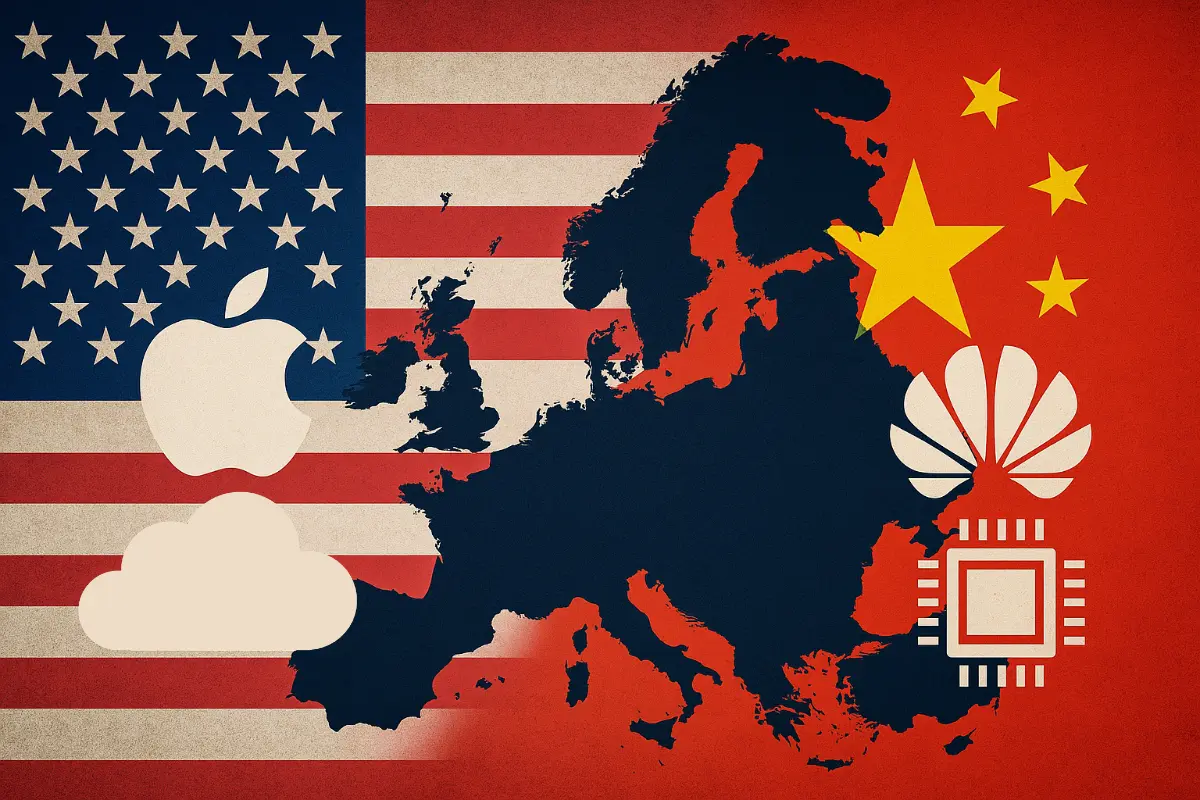Why Europe Is Caught Between American and Chinese Tech Giants
Without massive, sustained investment into foundational tech infrastructure, Europe will remain stuck between two superpowers with very different values.

Europe finds itself in a precarious position. After decades of outsourcing its digital infrastructure, the continent now faces serious geopolitical vulnerabilities that threaten its autonomy, security and future.
The 2018 US CLOUD Act is a stark example of this problem. This legislation grants American authorities sweeping powers to access data held by US companies, regardless whether that data sits in European data centres. Government records, commercial information and personal data of European citizens all lie exposed, without the legal protections afforded to Americans (and not real way of enforcing them).
Last month’s decision by the Trump administration to cut off satellite imagery to Ukraine demonstrates how quickly these dependencies can become existential threats. In the midst of war, a critical intelligence resource vanished with the stroke of a pen. As Trump himself might put it, America ‘holds all the cards’. Europe has precious few options when those cards are played.
Our website does not collect, store, or share any user data. If you enjoy our content and value your privacy, consider supporting us.
China’s Digital Silk Road
Whilst the US presents one set of challenges, China offers another. As the EU’s second largest trading partner and an emerging powerhouse in AI, quantum computing and manufacturing, Beijing’s technological strategy centres on state control and long-term dominance of supply chains and infrastructure.
Relations between Europe and China remain strained, primarily due to concerns about surveillance, intellectual property theft and the Chinese state’s influence over its tech sector. The Huawei controversy exemplifies these tensions: the UK banned the company from its 5G networks in 2020, with complete removal mandated by 2027. The EU’s response has been less cohesive, with only eleven member states implementing restrictions against ‘high-risk vendors’ like Huawei and ZTE under the EU’s 5G Cybersecurity Toolbox.
Most EU nations have stopped short of imposing full bans, caught between security worries and American pressure on one side, and cost considerations and existing commercial relationships on the other.
Policy vs Reality
Europe’s failure to align words with actions further complicates matters. Politicians speak grandly about digital sovereignty whilst their governments run critical systems on AWS, Azure and Google Cloud. The French Health Data Hub faced years of criticism for storing sensitive patient information on Microsoft Azure—yet in late 2024, the French Council of State upheld this arrangement , dismissing concerns about CLOUD Act vulnerabilities.
In 2025, the Dutch Parliament approved a motion to eliminate dependence on US software providers, citing national security risks. However, most European governments remain deeply embedded in American platforms. Initiatives like EuroStack and Gaia-X aim to create European alternatives, but adoption remains patchy at best.
The fundamental challenge isn’t just a lack of political willpower but one of competitiveness. European solutions often can’t match the performance, pricing or scale of their American and Chinese counterparts. Without massive, sustained investment in foundational technology infrastructure, Europe will remain trapped between two technological superpowers with vastly different values and agendas.
As Dutch MP Hind Dekker-Abdulaziz bluntly stated, ‘Our total dependence on American tech giants is a danger to our autonomy and cyber safety’. Yet the gap between policy ambitions and operational reality continues to widen across the continent.
The Ukraine war has revealed just how fragile Europe’s digital autonomy truly is. If a major conflict were to cut off access to key platforms or components, Europe would face not just economic disruption but severe national security threats with no domestic alternatives to fall back on.
Europe is dangerously unprepared for this reality.
Coming up: Why Europe’s dream of a unified digital market keeps falling apart. Subscribe to get the next piece first.
